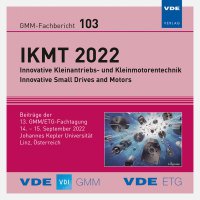Twisted-String actuator with hollow-shaft for portable orthotic devices
Konferenz: IKMT 2022 - 13. GMM/ETG-Fachtagung
14.09.2022 - 15.09.2022 in Linz, Österreich
Tagungsband: GMM-Fb. 103: IKMT 2022
Seiten: 5Sprache: EnglischTyp: PDF
Autoren:
Weymann, Sylvia; Pott, Peter P. (Institute of Medical Device Technology, University of Stuttgart, Germany)
Pretty, Chris G. (Department of Mechanical Engineering, University of Canterbury, Christchurch, New Zealand)
Inhalt:
Stroke is a wide-spread reason of disability worldwide. Patients are often left semi-paralysed. However, stroke-rehabilitation is very laborious and expensive for the public health system. Currently, rehabilitation methods require experienced physiotherapists and cannot be performed at home. Consequently, the goal of this project is to create a Cost-effective Hybrid Exoskeleton Aid for Stroke Rehabilitation (CHEASR). Initially the elbow joint will be investigated. To provide powerful, fast, yet cost-effective, lightweight, and compliant actuation, hollow-shaft twisted-string actuators (TSA) are proposed. These consist of two cords twisted along their longitudinal axis thus creating a helix – shortening with increasing angle of rotation. To achieve a compact system, the string is lead through the hollow shaft of the DC motor. The first prototype consists of an elbow exoskeleton and an actuation unit worn in a backpack including power supply, control boards, and electronics for the electromyography (EMG) measurement. Two TSAs work on Bowden cables to actuate the elbow joint in an antagonistic manner. Force control can be achieved using force sensors in series with each TSA. The motors are driven in a master-slave mode with the pulling motor as master – depending on the direction of movement. The overall length of the TSA (435 mm) could be reduced by the length of the motor and the coupling (120 mm). Considering the radius of the force application point of the orthosis (22.5 mm) a maximum torque of 7 Nm can be supplied to the elbow joint and its maximum angular velocity is 86.4deg/s. The presented TSA with a hollow-shaft DC motor is considerably shorter than comparable conventional designs. It is thus able to provide more stroke with smaller outlines or more stroke as a same-sized TSA. Therefore, size, force and velocity make the presented TSA suitable for portable orthotic devices.


